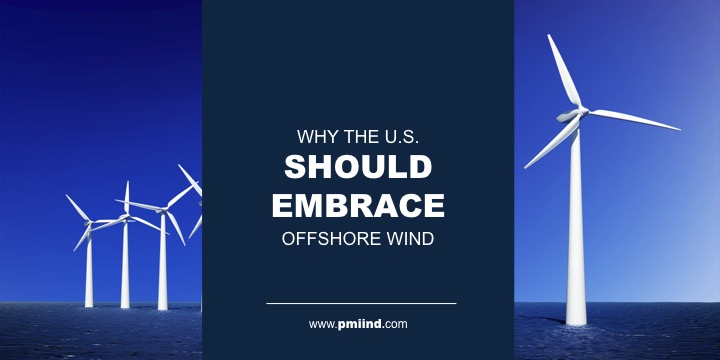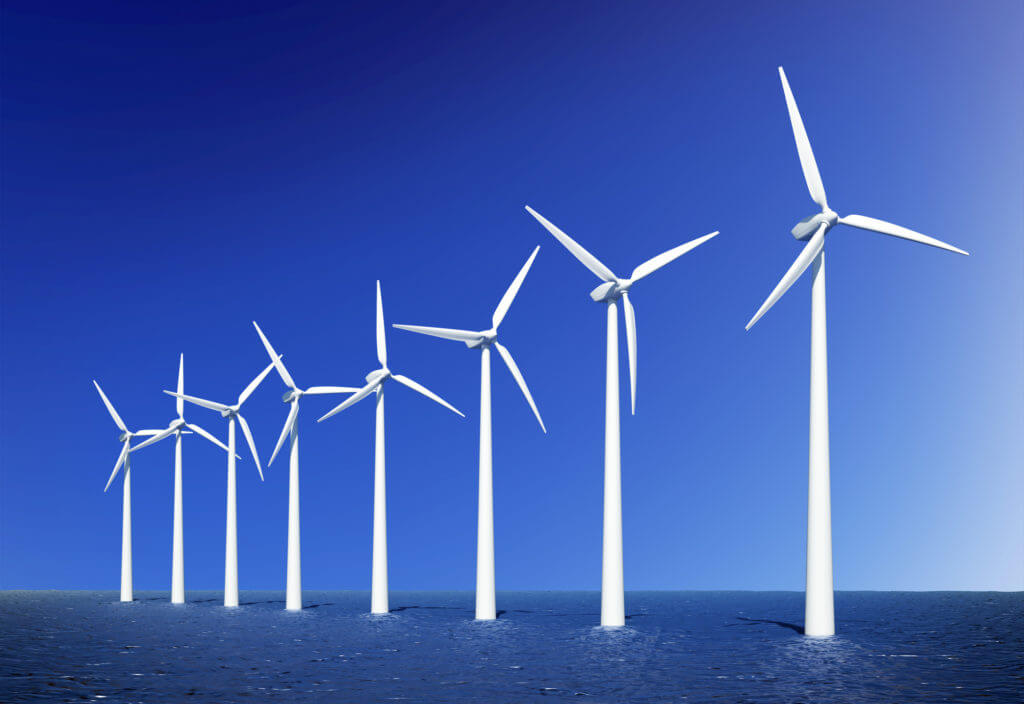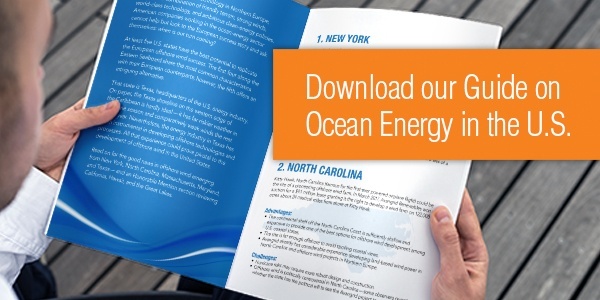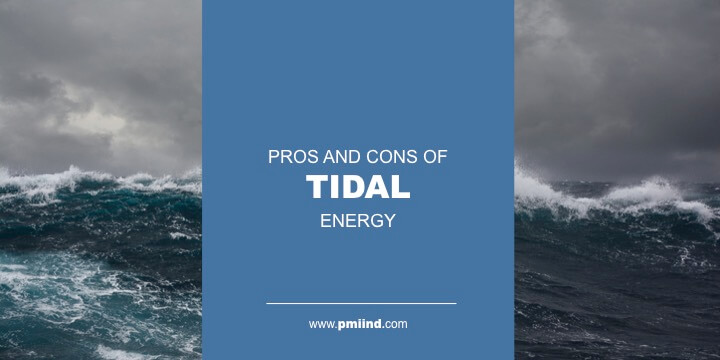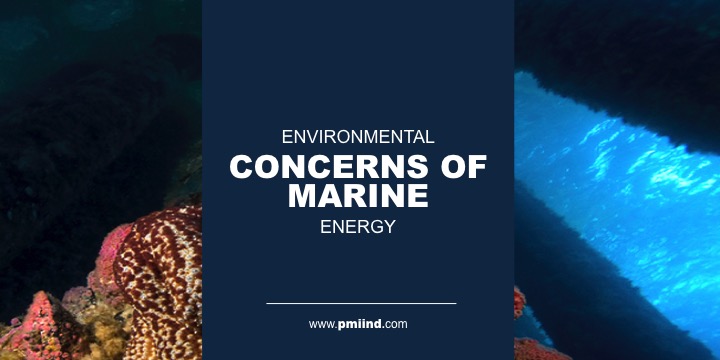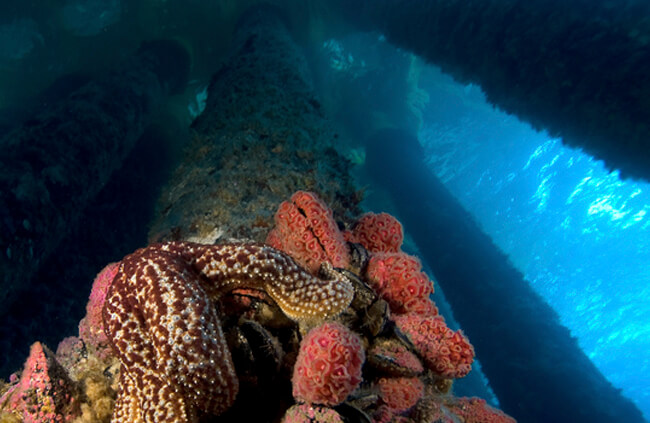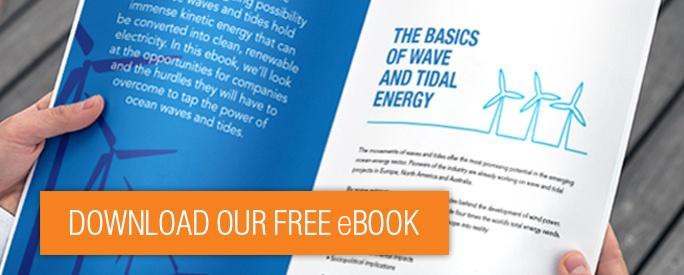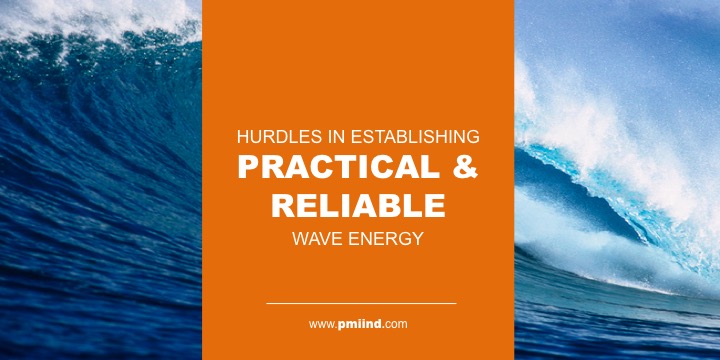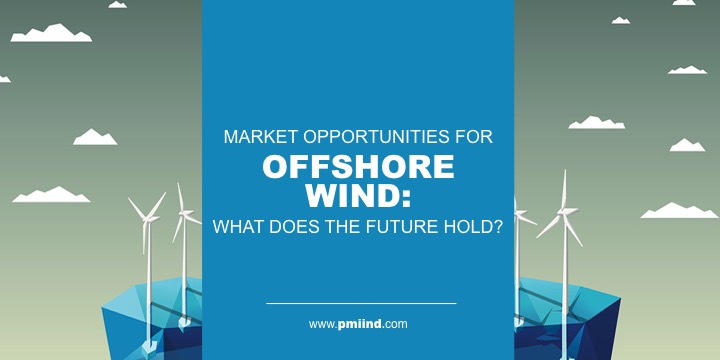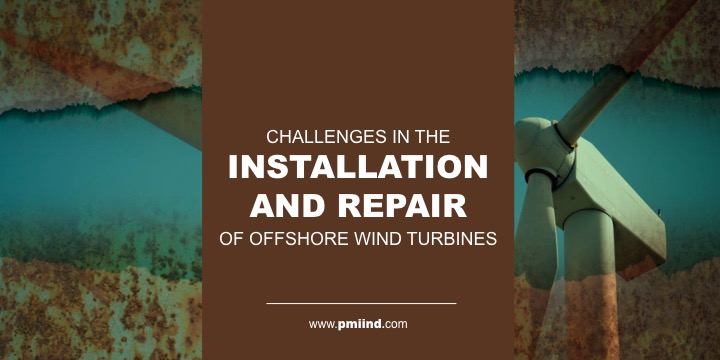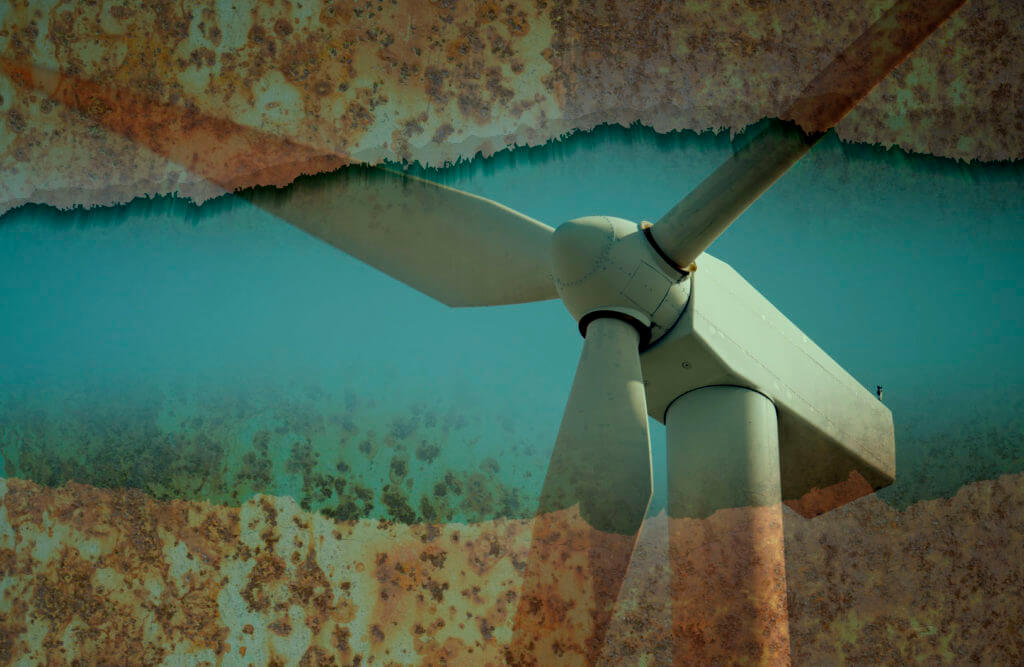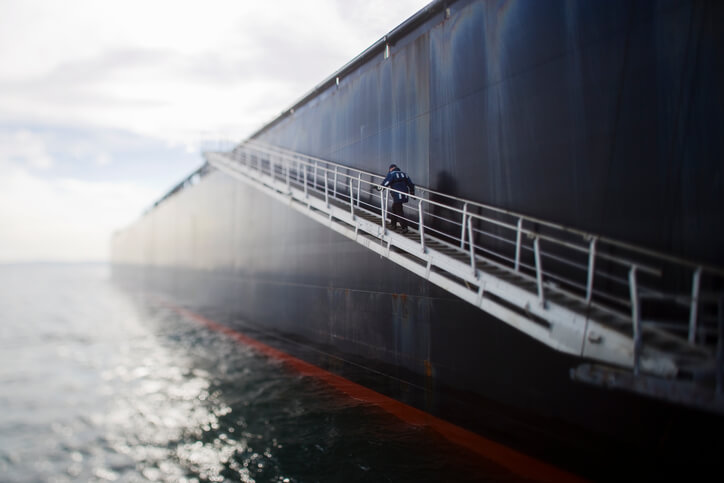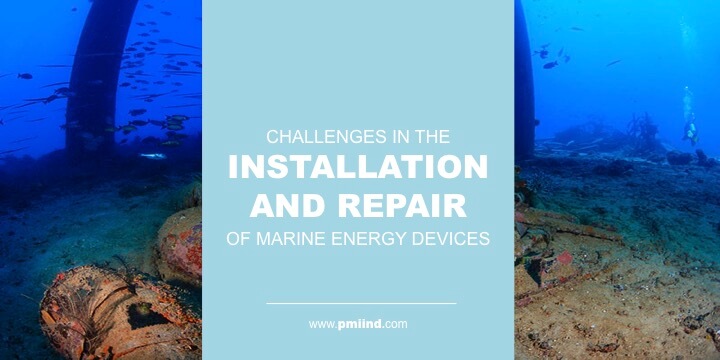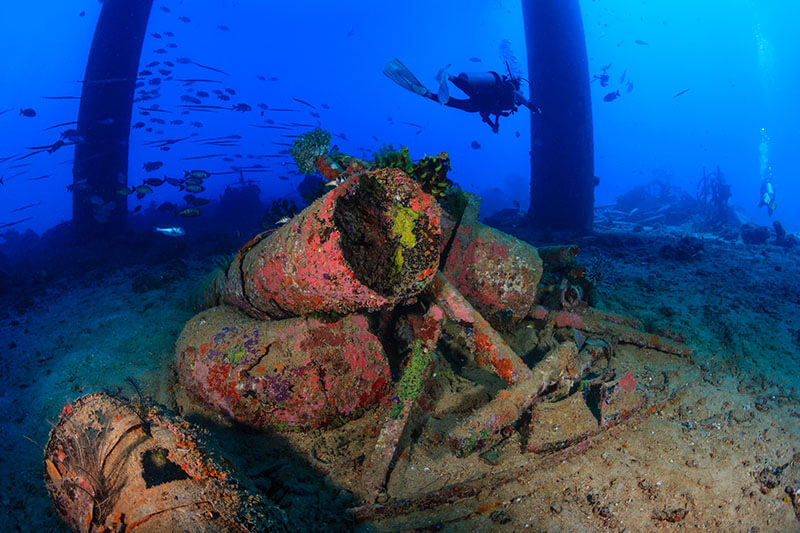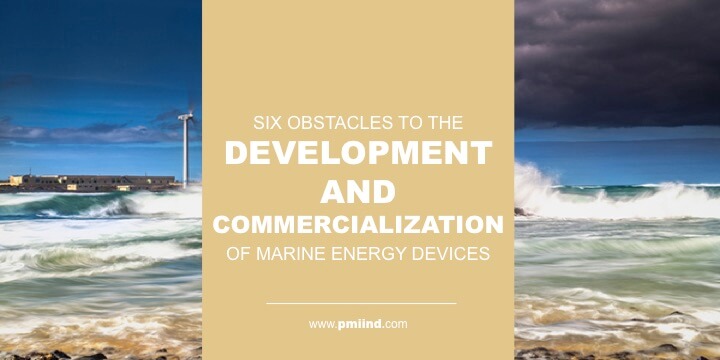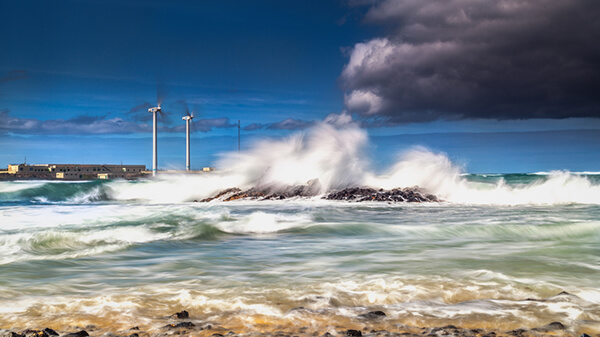The first U.S. offshore wind farm is expected to go online by the end of 2016, ushering in what could be a new era of renewable energy in the United States.
This is welcome news in a nation where land-based wind power has exploded over the past two decades, installing nearly 50,000 wind turbines that provide clean energy across the continent. Can the same spirit of innovation that made U.S. land-based wind power a world leader be applied to offshore power?
We’d like to think so, but, admittedly, there is a long way to go. The new Block Island Wind Farm is barely a blip on the nation’s energy map — powering just 17,000 households in a nation of 325 million people.
Completed in August at a cost of $290 million, the Block Island Wind Farm consists of five turbines towering over the waters of the Atlantic Coast south of Rhode Island. It might not sound like much in an age where thousands of offshore wind turbines pump carbon-free electricity to Germany, the U.K. and other European nations.
But it’s difficult to exaggerate the importance of the U.S. finally dipping its toes in the water, so to speak, of offshore wind. An abundance of caution on American shores had thwarted every previous offshore wind project. Now that offshore wind technology is mature thanks to a couple decades of European development, the U.S. is poised to reap the benefits of potentially cheaper offshore wind power.
This helps explain why several states along the Eastern Seaboard are embracing offshore wind power:
- The governor of Massachusetts approved a program in August allowing up to 1,600 megawatts of offshore wind projects in the next decade.
- New York approved a plan in August that says renewable power sources (wind, solar, etc.) must account for half of the state’s energy output in 2030. In September, the state released a blueprint for an offshore wind master plan to be completed in 2017.
- At the University of Maine, researchers are working with federal grants from the Department of Energy to develop prototypes of floating wind-farm platforms that can overcome many of the challenges associated with fixed offshore wind turbines. A French defense firm that’s moving into the renewables sector also has joined the project.
Projects on the drawing boards could add nearly 5 gigawatts of offshore wind power in the United States — a mere fraction of the estimated 4,200 gigawatts of energy that could be generated in the domestic waters of the United States.
Any offshore wind projects will have to overcome substantial regulatory and financial hurdles before any electricity starts streaming back to the mainland. But it’s worth the effort.
Why offshore wind is crucial to the U.S. energy equation
Offshore wind technology is more expensive to install and maintain than its land-based counterparts. But ocean breezes are stronger and more consistent than the wind passing over land, which creates the potential for much more efficient wind-energy operations installed offshore.
In effect we can conceivably pull more power from fewer turbines if offshore wind technology matures. Installing and maintaining these towers will require substantial expertise, which could produce a lot of steady jobs for coastal communities.
Meanwhile, the U.S. fracking boom that has done so much for the nature’s energy posture — lowering gas and oil costs and reducing the dominance of OPEC — remains politically controversial. If the public tide were to turn against fracking, we could see renewed pressure to tap green-energy sources like offshore wind.
Embracing the power of our oceans
At PMI, we’re strong believers in the potential of marine energy technologies because we’ve been providing rugged cable accessories to offshore industries for decades. To be viable, offshore wind farms must be able to cope with ever-present threats to subsea power cables that transmit electricity back to the mainland. Our cable terminations, cable protection and splices are built to withstand the worst our oceans can deal out, so naturally we’re embracing the potential of offshore wind.
The oceans alone won’t fix all of America’s energy problems, of course. But they should be part of the solution.
Related articles:
Gravity from the sun and moon tugs at the surface of our oceans, creating tides that move massive quantities of water across broad expanses of shoreline twice a day. All that moving water produces kinetic energy we can convert into electrical power.
Though all of the earth’s continents have shorelines and tides, we haven’t done much with all that energy. To date, tidal energy technology generally takes two forms:
- Tidal current converters. These devices are typically underwater turbines that look much like a wind turbine and capture energy from water moving past the blades.
- Coastal barrages. A barrage is a kind of dam across the opening of an estuary. It works much like a hydroelectric plant, except that it uses turbines to capture energy from rising tidewater rather than river water.
Current technologies offer only a glimpse at tidal energy’s potential. To get the whole picture, we need to weigh the pros and cons of tidal energy.
Here’s a quick summary: (more…)
Generating electricity from waves or tides requires placing large mechanical devices in the middle of complex, fragile ecosystems. How will life respond to these intrusions?
Because we’re so early in the evolution of marine energy, environmental concerns post a host of serious questions, such as:
What have we learned from the development of artificial reefs?
Fixed structures in the ocean naturally invite the arrival of reef species, creating artificial reefs. If the introduction of reef species boosts the biodiversity of a marine energy project area, the development could be a net benefit.
However, if reef species include predators that wipe out local species that have no natural defenses, then the effect could be negative. Early projects will have to be studied intensely to see how this works out.
How will migratory species respond?
A large network of marine energy devices could force migrating mammals, fish and birds to change their travel paths. Even subtle changes can throw off reproductive rhythms that evolved over millions of years. If these changes make it harder for migrating species to reproduce, or weaken them so they are more vulnerable to predators, the cost could be substantial.
Will wave-energy devices change the dynamics of shallow shorefront ecosystems?
Dozens or hundreds of marine-energy devices in a well-defined region can affect the velocity of waves striking the shore. Small changes in the depths of tidal pools or the thickness of sand layers could influence species’ ability to feed and reproduce. How will we determine an acceptable level of risk or damage in these scenarios?
Can wave energy devices pollute local waters?
Marine energy devices require lubricants that could potentially leak and cause pollution. Furthermore, the substantial corrosive nature of seawater will wear these machines down quickly, expanding the risk of pollution. Granted, most devices would not carry enough lubricants to create a substantial oil spill. But persistent small leaks spreading over months and years could still have a profound impact.
Can devices survive exposure to pollutants?
The concerns over potential pollution by marine energy devices shouldn’t obscure the possibility that offshore sites might already be polluted with chemicals that could damage these devices. Even undisturbed sites pose a challenge: Could large chemical or oil spills disable devices installed in them?
What happens to fisheries?
The livelihoods of people in the fishing industry depend on healthy ecosystems that support fisheries. Any project will have to weigh the economic, social and environmental impact on coastal industries like seafood.
How will environmental regulations affect marine energy projects?
Regulators and rule compliance will be a fact of life for the marine energy sector. Developers will need to court the regulators to figure out exactly what it takes to stay compliant. Regulators may also conduct impact assessments that discover rare endangered species, which could grind everything to a halt.
Finding the right ways to draw energy from our precious oceans
The rise of marine energy is a natural progression for PMI, which has been providing rugged, durable cable accessories to the energy-exploration industry for decades.
Though we are enthused about the possibilities of marine energy, we respect the need to tap this energy source without damaging delicate marine ecosystems. Sure, that adds extra layers of time, expense and complexity. But it’ll be worth it to keep our oceans as healthy as possible.
Wave power looks like a no-brainer at first glance. After all, oceans cover more than 70 percent of our planet’s surface, and waves lap up on the shores of all seven continents.
Just build machines to convert those waves into electricity and we’re all set, right?
Alas, wave energy challenges can be as deep as the ocean itself.
The future of the offshore wind market depends on where you’re standing.
- In Europe, the offshore wind market is so well established that new generations of equipment are replacing obsolete machinery.
- In North America, the industry is so new that it exists largely on the drawing boards of offshore-wind developers.
- In Asia, it’s somewhere in the middle as China ramps up its offshore wind capacity.
Installing and maintaining offshore wind turbines is an incredibly complex undertaking full of daunting logistical challenges.
For starters, ships built to install turbines can cost $100 million or more. Stormy weather can delay installations and thwart repairs. Weather and erosion exact a long-term cost on turbine blades, and turbine engines must be painstakingly designed for always on-operation for decades.
Here’s a quick look at some of the difficulties in installation and repairs in offshore wind installations:
Foundations
Placing a foundation on the sea floor is a sophisticated, highly complex job. A gravity-base foundation uses a large volume of reinforced concrete and must be moved to a carefully prepared spot on the seafloor. All this requires specialized ocean vessels and specific expertise.
Sea floors vary widely around the world. For instance, the sea bed off the coast of China is a lot different than the sea bed of European waters, so foundation expertise gained in Europe might not apply in China — adding to the complexity (and expense) of China’s ambitious offshore-wind agenda.
Once the foundation is installed, it becomes vulnerable to saltwater corrosion and underwater species that attach themselves and may have to be eventually removed at considerable cost.
Blades
Longer turbine blades produce much more energy than shorter ones, so the blades keep getting longer and longer as the offshore-wind industry evolves. Obviously, longer blades will create extra complications in transport and installation.
But the bigger challenge is in maintenance. Blades suffer substantial erosion from constant exposure to the wind that decreases their efficiency. They often also suffer lightning strikes that cause considerable damage below the wind-facing surface.
And the manufacturing processes of turbine blades are not completely standardized, so maintenance processes for one kind of blade can be substantially different than those on another variety. This adds to the difficulty of finding and training people to perform maintenance on turbine blades
Turbine engines
Turbine engines are large mechanical devices suspended high in the air. Installation is fairly straightforward because the offshore wind industry is so mature in European waters. But it’s still a non-trivial job to install a wind turbine engine in the open ocean because of the usual weather pressures.
Because they run 24 hours a day for years on end, turbine engines must be carefully designed and manufactured to close tolerances to minimize breakdowns. An article in Forbes magazine likened running a wind turbine for 20 years to getting 3 million miles from a car engine.
Turbine engines have lots of moving parts including bearings and gears that eventually wear out. This cannot be entirely avoided, but it can be monitored with increasingly sophisticated computer software that can predict when critical parts will fail, and allow them to be removed before they give out and cause serious damage to the machinery.
Transmission cables
The technology for laying transmission cables is mature and the techniques are well understood. At PMI, we’ve been building premium, high-performance subsea cable accessories for decades, so we’ve seen these developments up-close.
The biggest maintenance challenges for transmission cables happen if they get snagged by ship anchors or fishing-trawler equipment, or if they’re damaged in subsea landslides. These mishaps require sending highly trained crews to the site of the break and fashioning a repair at sea. That will always be expensive and time-consuming.
Costs cannot be ignored
Offshore wind remains very expensive to install, maintain and operate. WindEurope (formerly EWEA) reports that offshore wind LCoE must be reduced in order for it to “remain a viable option in the long-term.”
This places a lot of pressure on offshore-wind operators to find ways to reduce these kinds of costs. Using cheaper materials may be attractive in the short run, but if it adds to long-run maintenance costs, it’ll be a bad bargain because fixing things at sea is so much more complex.
Related articles:
Damage to Subsea Cables a Huge Risk to Offshore Wind Farms
Companies that feel like they’ve missed the boom in offshore wind power technology may have the chance to ride a new wave of innovation with the rise of marine energy technology.
Converting the solar and kinetic power of our oceans into cheap, practical electricity seems like a far-off hope right now, but at some point the temptation to dive deep into marine energy methods and devices will prove too irresistible to pass up.
That’s something we’re watching closely here at PMI. Supplying equipment to companies that work in the oceans is what we do. Estimates suggesting the earth’s oceans could theoretically supply up to four times the world’s total electricity demand have definitely grabbed our attention.
Admittedly, it’s unlikely the oceans will ever supply all of humanity’s energy needs. But marine energy can become part of a diverse portfolio of renewables technologies like solar, wind and geothermal that serve the world’s energy needs while reducing carbon output and limiting global warming.
Looking Back on the Rise of Offshore Wind
It’s helpful to step back and look at how quickly offshore wind power became a mature technology in Europe. In 1990, there were no offshore wind farms in European waters. At the end of 2015, more than 3,000 offshore wind turbines were up and running, according to the European Wind Energy Association.
How many people could have projected that kind of growth in, say, 1980?
Obviously, nobody knows what the future holds. Marine energy is extremely expensive to develop and difficult to deploy right now. But it might not always be.
Potential Products and Devices in the Marine Energy Sector
European companies are already developing turbines and other devices to generate power from ocean tides and waves. These are big, expensive technologies that require substantial investments of time, energy and expertise. The companies working on them hope to exploit first-mover advantage and export their technologies worldwide.
As a supplier of subsea cable management systems, we see some interesting possibilities as these technologies emerge:
- Attachment points: One of the big challenges with marine energy is fixing devices to the ocean floor. Connections must be strong enough to hold energy devices in place and built to fend off the corrosion of saltwater. And they must be unobtrusive enough to have low impact on the undersea environment.
- Underwater vehicles: In an age when self-driving cars are already on the roads of Silicon Valley, it’s easy to envision rising demand for small submarines that can be put to work monitoring, repairing and maintaining marine energy devices.
- Pipe joints: One intriguing technology combines cold water from deep in the ocean and warm tropical water at the surface and creates electricity by exploiting the temperature differential. Called ocean thermal energy conversion, or OTEC, this technology requires pipes as long as several kilometers. Flexible pipe joints can help these pipes survive in ocean currents.
This list barely skims the surface of the possibilities in this sector.
Where the Marine Energy Sector is Going
Wave and tidal energy are getting the most attention right now. Costs for commercial development are still too high for this technology to become mainstream right away, but an encouraging collection of pilot projects in Canada, Europe and Australia — combined with the work of companies developing marine power devices — could lead to discoveries that can bring these costs down and encourage further development.
At PMI, we build accessories that make it easier to use cables in the ocean. Given that all marine energy devices have to transmit electricity over cables, we’re excited about the potential of marine energy.
But we also think that companies in a broad range of industries should be exploring these technologies and looking for ways to bring new products to market. If history is any guide, the people who invent the technologies that move marine energy into the mainstream stand to be forerunners of the industry.
Four intriguing technologies hold the potential to tap into the vast renewable energy of our oceans.
Nobody expects these marine energy technologies to replace coal, petroleum or natural gas in the near future. Instead, they could become assets in a diverse portfolio of technologies that can reduce our dependence on fossil fuels and temper the effects of climate change.
Let’s take a quick look at these marine energy conversion technologies.
Wave Energy
The natural up-and-down motion of ocean waves generates large volumes of kinetic energy. Wave energy devices capture this motion and convert it into electricity.
Some wave energy devices look like ocean buoys that bob up and down. Others string together a long, snake-lake chain of floating tubes. They can work close to land or farther out in the open ocean.
Wave energy is plentiful, but it’s also problematic. Waves rise and fall in multiple directions, and their velocity changes with the weather. That can make it difficult to get a reliable constant stream of energy. Also, only a few coastlines are optimal locations for wave-energy devices.
The upside is that several prototype wave energy devices are already in the water, and they’re yielding clues on how to make wave energy more practical.
Tidal Energy
Rising and falling tides generate substantial kinetic energy. The bigger the tide, the bigger the power potential. Tides rise and fall like clockwork, so tidal energy can provide a reliable stream of energy at specific times of day.
Some tidal devices look like underwater wind turbines. Because water is so much denser than air, the turbines can turn relatively slowly and still produce a worthwhile stream of electricity. Another tidal technology creates dams that capture tidal waters and uses turbines to tap the flow, much like hydroelectric plants.
Tidal energy’s impact on the subsea environment is a big unknown. Marine species may attach themselves to the devices, causing extra maintenance costs. Building tidal basins is expensive and disruptive as well. And large numbers of subsea turbines can affect the velocity of tides, which could shake up delicate undersea ecosystems.
Salinity Gradient Energy (SGE)
Salinity gradient power exploits the energy produced when saltwater comes in contact with freshwater.
The technology uses a membrane to separate saltwater from freshwater. One kind of SGE membrane generates an electrical current on its own, while another kind of SGE membrane produces pressure that can turn a turbine and generate electricity.
These membranes anchor the technology. They must be extremely large to produce abundant volumes of energy. Right now they are very expensive and prone to fouling by algae and other aquatic life, but new companies are already trying out new membrane technologies. Innovations in nanotechnology could potentially make SGE economically viable.
SGE could also work in wastewater plants to separate saline water and create electricity to help power the plant. That small-scale function could open the door to more substantial innovations that make the technology much more practical.
Ocean thermal energy conversion (OTEC)
Water at the ocean’s surface is much warmer than water in the murky depths. OTEC uses this temperature gap to produce electricity.
A complex system pumps water from up to a mile deep in the ocean. At the surface, a power station exploits the differences between hot and cold water to produce electric current. This requires no fossil fuel, and it can generate more energy than the pumping and production costs create.
This technology works best in the tropics in areas where there is at least a 36-degree F (20 degrees C) difference between surface water and deep water. It also requires massive pipes to pump the cold water up. But the energy is extremely cheap once the power plant has been built, so it’s an intriguing option in a few specific areas of the globe.
Why We Like the Potential of Marine Energy
At PMI, we have no illusions about the challenges of marine energy conversion. But we still think companies everywhere should be paying more attention to these technologies. In Europe, there’s a strong push to get 20 percent of the continent’s energy from renewable sources by 2020. That creates an incentive for a few bold pioneers to get more prototypes into the water and see how they perform.
Those incentives could create opportunities for companies that have specific expertise. PMI is just one example: We already provide some of the world’s most advanced accessories for the subsea cables that all of these technologies will need to transmit electricity to land.
Marine energy technologies will require advanced engineering to make them cost-competitive with fossil fuels. They’ll also need advanced materials designed specifically for subsea environments.
That looks like a wealth of opportunity for innovative firms that can help bring these technologies into the mainstream.
Turning our oceans into a reliable power source means putting complex devices in treacherous, ever-changing environments. The sea is much friendlier to sharks than to subsea power turbines.
PMI has been providing cable hardware for oil exploration and other subsea projects for decades, so we know only too well the challenges of putting anything in the ocean and expecting it to keep working. Salt water is extremely corrosive. Many materials are extremely vulnerable to corrosion. Subsea organisms attach themselves to devices and reduce their effectiveness. Storms create chaos.
Marine energy devices can have lots of moving parts, take up lots of space and become part of the subsea biome. These are all things marine energy companies will have to confront as they build out the marine energy sector.
Here are some of the challenges we’ve noted in our research on installing and maintaining marine energy devices.
Physical Equipment Considerations
High-strength synthetic rope termination: Steel cables that fix marine energy devices in place are extremely heavy. An attractive alternative is high-strength synthetic rope, which often has the strength of steel but substantially less weight. You don’t tie knots in this kind of rope to attach it to devices. You use termination hardware, much like the hardware PMI builds for steel cables.
Mooring lines: Wave energy devices move with the motion of waves and use technology to convert the kinetic energy in moving waves into electricity. Typically, mooring lines are fixed in place. Allowing them to move with waves creates a host of challenges.
Large-diameter pipe bending: An intriguing marine energy technology called ocean thermal energy conversion, or OTEC, requires large-diameter pipes that could be up to several kilometers long. The trouble with these pipes is they are rigid and prone to bending because of relentless movements of ocean waters. The solution is to add flexible joints to these pipes that work much like the expansion joints in bridges — giving the pipes more flexibility and extending their life.
Logistical Challenges
Small installation windows: Just as there are monsoon seasons on land, there are hurricane and typhoon seasons to deal with at sea. And even after these seasons fade, rough weather limits the time window for installing marine energy devices and fixing problems that crop up afterward.
Emergency retrieval: If a marine energy device breaks down or malfunctions in a way that presents an environmental threat, it may have to be retrieved as quickly as possible. This could require commissioning a ship and crew to retrieve the device on short notice, which can be extremely expensive.
Cable-laying methods: Cable-laying technology is mature and efficient, but it’s also extremely complex, requiring people who know how to deploy cable in ways that reduce the threats from ship anchors and submarine landslides. And the more cables get installed underwater, the more complex cable laying and maintenance becomes. Damaging an existing cable while trying to install a new one will be a persistent risk.
The rough terrain of the seabed presents another challenge. These high-energy environments have long been avoided because of the challenges they present, but now we must overcome those challenges in order to harvest the energy.
Environmental Issues
Biofouling: Algae, protozoa, and many more aquatic species attach themselves to the exterior surfaces of everything that goes underwater — anchors, ropes, pipes and marine energy devices themselves. Biofouling has to figure in any maintenance plans marine energy developers devise.
Device anchoring: Devices like tidal turbines that are installed on the ocean floor have to be anchored. Some anchors require drilling into the seabed, which can threaten delicate undersea environments. The challenge is to design and install anchors that have the lowest environmental impact while still being rugged enough to survive for decades in the ocean.
Unique and demanding terrain: Coastal topography varies widely from one continent to the next, so technology that works fine off the coast of France might be useless off the coast of Japan. This challenge holds worldwide: Tidal energy requires large tidal movements. Wave energy requires consistent wave movements. All these variables make it difficult to create technologies that can be standardized and scaled to reduce installation and maintenance costs.
What We See on the Horizon
At PMI, we already supply some of the world’s most advanced subsea cabling hardware, so our technology is poised to help address some of these challenges. Things look good to us right now, and the future looks even more promising.
As Europe pushes to get 20 percent of its energy from renewable sources by 2020, there will be social and political pressure to develop technologies like marine energy. That should create ample opportunities for companies to dip their toes in the water of marine energy technology.
Marine energy is a beguiling concept because our oceans have massive energy potential. Oceans can produce kinetic energy and store solar energy, both of which can be converted into electricity to replace fossil fuels that contribute to global warming.
But surface water on our planet also produces significant challenges: it’s turbulent, corrosive and teeming with life. Coastal areas are pivotal to local economies. Developing marine energy devices to tap the energy of the world’s oceans is rife with difficulties that boil down to six pivotal concerns.
Cost of Development
There’s no way to avoid the huge costs of developing first-generation marine energy technologies. For instance:
- Scientists must get funding to develop and test hypotheses.
- Engineers must find practical ways to convert research findings into effective mechanisms.
- Prototypes must be developed using components that can withstand brutal ocean environments.
And all this must happen before moving to the manufacturing process, which imposes a new set of development costs.
Legal and Regulatory Hurdles
Oceans are shipping lanes and fisheries. Coastlines are prime tourist destinations. Waterways play a huge role in economies around the world, and all economies have legal and regulatory challenges.
These are the complications entrepreneurs have to think about before they wade into the uncharted waters of marine energy development. They’re reluctant to pour a lot of time, energy and money into projects that could get mired in litigation and regulation.
Political Support
It’s one thing to bring a new car factory to town with the potential to create thousands of jobs. Marine energy device developers can’t make those kinds of promises.
Also, marine energy is so new that few people at the political level understand its potential. That makes it difficult to rally voters who can lean on politicians to encourage marine energy development.
Also, public subsidies for renewables development can become extremely controversial if voters decide they haven’t gotten a good return on their investment. Because all politics is public, developers might not want to see their names in the headlines if their projects become a political liability.
Social Support
The public also has no idea of the potential for marine energy devices, so it’s hard to tap a deep vein of public popularity to encourage investors and entrepreneurs to enter the sector.
Furthermore, devices could be installed in places where the public can see them and object to changes in their favorite scenic ocean views. And they might wonder about what will happen to our oceans if we install these devices in them.
Environmental Concerns
All waterways are delicate ecosystems that are easy to knock out of balance. Installing rigid metal devices on the sea floor will create artificial reefs that could lure invasive species that have a survival advantage over the animals that are already there.
Devices also generate sounds that can affect some subsea species. The spinning blades of subsea turbines can potentially kill or injure fish and aquatic mammals.
Large numbers of devices in the water might also interrupt the migration patterns of fish and mammals, tripping up local fishers that depend on them for their livelihoods.
Levelized Cost of Energy (LCOE)
Levelized cost of energy (LCOE) is a complex calculation that can be used to compare the cost-effectiveness of competing energy sources. For instance, the LCOE of offshore wind installations is about two-and-a-half times higher than land-based wind power, according to the U.S. Energy Information Administration.
Post renewable energy sources have substantially higher LCOE than natural gas or coal, and some estimates say that marine energy devices have a LCOE as much as double that of natural gas or coal.
All of these challenges await anybody who ventures into the marine power device sector. The risks are large, but the rewards of devising technologies that can free us from fossil fuel dependencies could be even bigger — especially to those who come up with the most transformative devices.
Have time to discuss ideas? Click Request A Quote and we’ll be in touch shortly.
- 1
- 2

